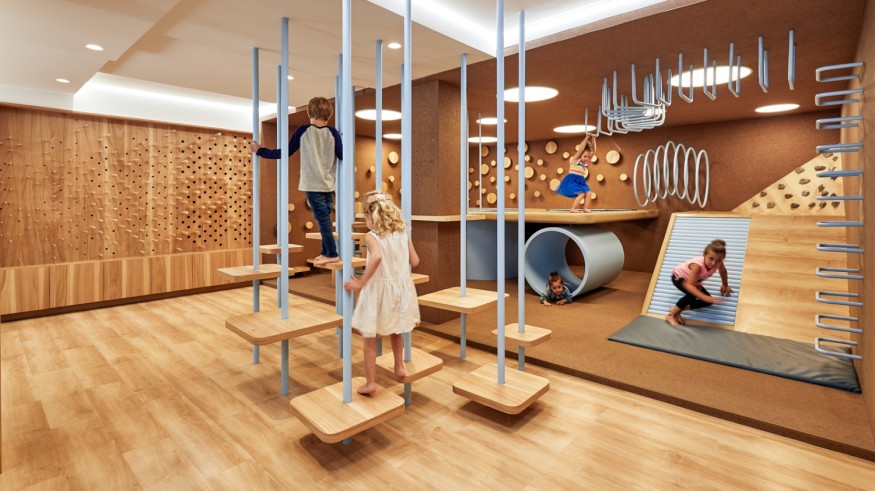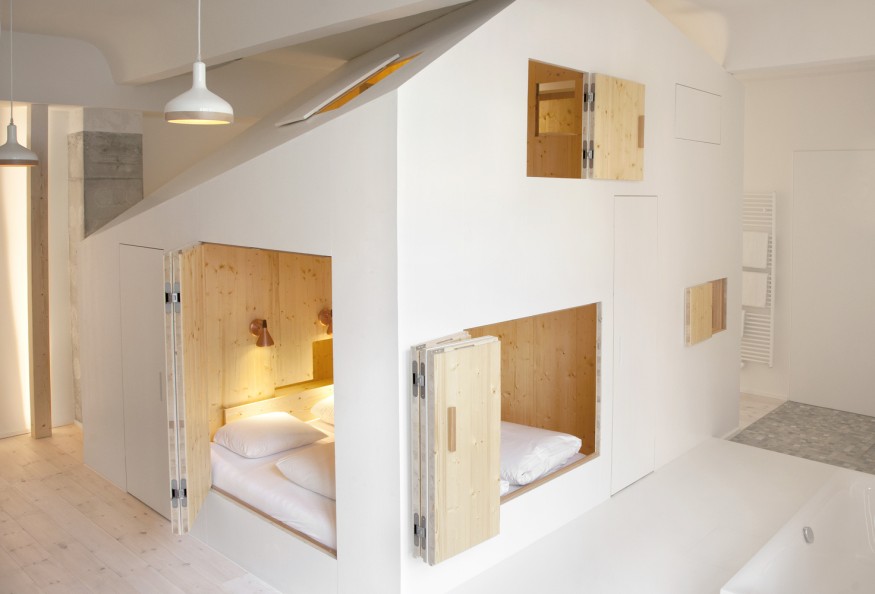Architectural Marvels: Nurturing Young Minds Through Interior Design

A child's view of the world is endlessness, interest, and sometimes overpowering ponders. Numerous individuals think that our viewpoint and the way we see the world are molded by the encounters we had as children. Renowned architect Peter Zumthor echoes this sentiment, citing his childhood memories in Switzerland as the deepest well of architectural inspiration. These early experiences have become reservoirs of atmospheres and images that permeate his work today.
Understanding how children grow physically and psychologically demands a profound observation of various factors, from hereditary traits and genetics to their interactions with others and the environments in which they live, play, and learn. On World Children's Day on November 20th, we delve into how architects and designers stimulate children's autonomy and promote their mental and physical well-being through innovative approaches to architecture and interior design.
Dr. Montessori's Concept: A Guide for Optimal Growth
At the beginning of the 20th century, Dr. Maria Montessori, an Italian physician and educator, began developing her educational methods. Montessori pedagogy is now recognized, providing techniques and strategies that contribute to the good development of children. It emphasizes creating an environment that caters to their physical and mental well-being, stimulating autonomy, self-esteem, and socialization skills. This method revolves around three pillars: the child, the conscious adult, and the prepared environment, all intricately connected and interdependent. It takes a conscious adult knowledgeable about child development to create a serene, patient, kind, harmonious, and considerate space for both adults and children.
Most architects, recognizing the significance of the bedroom as the primary space where a child spends much of their time, have embraced the Montessori methodology. They integrate other kid-friendly architectural features to create environments that foster growth and independence.

1. Curved Forms: Aesthetic Appeal with Safety in Mind
Safety is paramount when designing spaces for children. Sharp edges and angles, especially at eye level, pose potential hazards. Designers have responded by incorporating curved forms with rounded and smoothed edges. Beyond safety considerations, these curved silhouettes infuse spaces with a young, fun, modern aesthetic, evoking a nostalgic return to childhood.
2. Safe Materials and Fit-outs: Prioritizing Health and Hygiene
Maintaining a bacteria-free environment is critical in spaces designed for kids. Surfaces that are easy to clean, free from harsh chemicals, and resistant to insects are prioritized. Antibacterial glossy or semi-glossy surfaces, microfiber, and vinyl are popular choices. Designers have also innovatively replaced traditional handles and knobs with invisible hardware, ranging from magnetic push latches to integrated handles, ensuring safety while maintaining a sleek and minimalistic look.
3. Scale: Designing for the Child's Perspective
Le Corbusier's assertion that "a man looks at the creation of architecture with his eyes" highlights the importance of designing spaces from a child's perspective. Interior spaces for children should be scaled down to match their height and spatial needs. This design approach allows children to move around and interact with the space independently, fostering a sense of safety and unrestraint.

4. Interactive Spaces: Fostering Creativity and Physical Activity
Architects design spaces that enable natural creativity, freedom of play, and exploration to promote healthy physical and mental growth. From stacked geometric structures to built-in games and entertainment, these spaces engage children physically, recognizing that they learn best through hands-on experiences. While some parents prefer limiting screen time, others incorporate interactive screens into playrooms, engaging children in a digitally enhanced learning environment.
5. Surfaces that Engage the Senses: Stimulating Sensory Development
In addition to digital screens, textured surfaces are crucial in enhancing children's sensory receptors. Surfaces that create sound with friction or change colors stimulate different senses. Chalk or whiteboards contribute to motor skill development through drawing and painting. Mirrors, another sensory element, aid children in recognizing their own body and face, helping them learn to identify facial expressions and emotions.
6. Accessibility and Adaptability: Empowering Through Design
The child-oriented architecture emphasizes child-only features, allowing them to rely solely on themselves. Accessible architecture provides room for children to explore and navigate spaces independently. Recognizing that no two children are the same and each age group has different spatial needs, spaces should be flexible, evolving in parallel with children's growth.

7. Openness to the Outdoors: Connecting with Nature
It is not intended for children to be confined to one area. They use all of their senses to investigate their surroundings at this age. Recognizing the importance of the outdoors, architects have incorporated access to nature through direct sunlight, extended landscapes, or water features. Projects built on the ground floor benefit from direct access to adjacent landscapes, giving children room to be in the open.
8. Color Palette: Navigating Complexity with Simplicity
According to the Montessori method, a limited color palette is recommended to facilitate the development of decision-making capacities. A profusion of colors and textures in the same environment can cause confusion and irritation, especially for younger children. This minimalist approach ensures that the environment supports cognitive development without overwhelming young minds.
In conclusion, the exploration of interior design for children goes beyond aesthetics; it's a thoughtful approach that considers safety, health, and the unique needs of growing minds. By incorporating elements that foster autonomy, creativity, and connection with nature, architects and designers contribute to creating spaces that nurture the holistic development of children. As we celebrate World Children's Day, these projects stand as testaments to the power of design in shaping the early experiences that will influence future generations.













